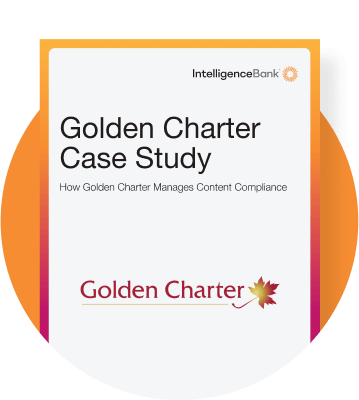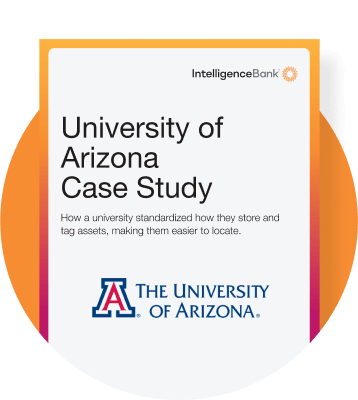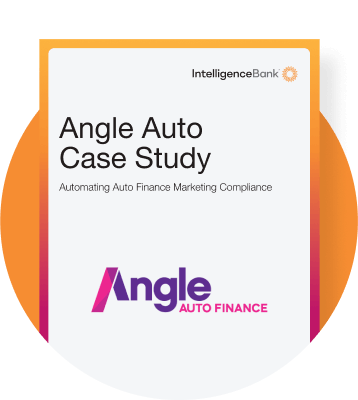For insurance companies of all types, Marketing Compliance teams play one of the most indispensable roles in the whole organization. They are the first and last line of defense when it comes to ensuring every marketing asset is within the law.
The knock on effect of any mishaps can result in catastrophic fines and bad outcomes for customers. Not only do they have a heavy amount of responsibility, they also have a heavy workload. Keeping up with constantly moving regulatory goalposts, they also need to battle an avalanche of review requests from their marketing colleagues – all of whom want approval yesterday.
The tension between Marketing and Legal is nothing new. Marketing wants to push boundaries that Legal often say no to. Legal wants time to review material thoroughly amongst other priorities while Marketing wants to capitalize on a commercial opportunity today. But what is new is a rapid increase in digital media spend and scalable content tools. It’s created a perfect storm that has greatly added to reviewer workloads.
Marketing Compliance teams find themselves facing a choke point with a high volume of material that needs to be ‘processed’ and no time to dedicate or people to delegate to. It’s a situation that cannot continue on the same trajectory. Hiring your way out of it is not a practical long term solution.
In order to better understand the nature, volume and time attributed to review feedback, IntelligenceBank undertook an analysis of anonymized, aggregated client data from major Insurance firms. We identified data that reveals behavioral trends and through that, highlights the way toward faster content approval through automation and improved interdepartmental collaboration.
A key finding was that content reviews between the two departments at a medium sized insurance firm often well surpassed 30,000 comments per year. That’s a lot of feedback to write and amend, and a lot of time wasted if those comments are repetitive.
What Are Examples of Feedback from Compliance Teams to Marketing Teams?
Customers need clear and honest information to make informed decisions about insurance products. Incorrect or incomplete details could cause them to choose inappropriate products, resulting in financial hardship or unmet needs should they lodge a claim. Clearly then, the majority of review feedback from Compliance to Marketing comprises comments around reducing risk by qualifying terms and maintaining transparency. But it also encompasses notations where brand standards have been breached as well as general proofing.
Here’s an example of common feedback patterns:
Legal & Regulatory Compliance
Missing, incorrect or outdated disclaimers
“Privacy Policy to be added: ‘Your Privacy. We collect, hold, use, and disclose personal information so that we can offer and deliver to you, products and related services that may assist us with the management of your complaint…’”
“Please change disclaimer to: ‘Normal underwriting rules and conditions apply. 10% online discount applies to a new Home Insurance, Contents Insurance and Landlord Insurance purchased online through [website].’”
Requests for specific legal language
“Please change disclaimer to: ‘Normal underwriting rules and conditions apply. 10% online discount applies to a new Home Insurance…’”
Product-specific disclosure issues
“‘Selecting the Theft option, covers the cost of repairing or replacing your tools if they’re stolen from a secure location.’ to be changed to something along the lines of the below as the cover is ONLY at the location shown on the policy schedule (i.e. where the trade operates from). ‘Selecting the Theft option, covers the cost of repairing or replacing your tools if they’re stolen from your business address.’”
Language
Overstatements or absolute claims: “Is it correct to say ‘most’?”
Inconsistent terminology
“Should the end tagline include the Before & After messaging?”
Use of high-risk words: “Can we change this to something else, as saying ‘Save up to x%’ was what got us in trouble with pricing promises”
Grammar and spelling issues
“Looks like the word requirements is missing an ‘e'”
Brand
Incorrect brand name usage
“Should we include something around the fact that the customer needs to purchase the policy via the online portal to get the discount” (This comment, while about discounts, relates to brand consistency in messaging and offer presentation).
Logo-related issues
“It looks like the incorrect image has been used – the logo is tiny.”
Inconsistent tone
“While we still applaud the creativity and wittiness, we’re not sold on this still and would rather see it go to the cutting room floor.”
Inappropriate language for the brand
“Can we change ‘cheaper’ to ‘better value’?”
How Many Review Notes Do Compliance Teams Create for Marketing Teams in a Year?
It’ll come as no surprise to those in the industry that the amount of commentary between legal and marketing is significant. We’ve been able to quantify it in the table below. Based on anonymous client data extracted from small, medium and large insurance firms we’ve tallied the large volume of comments occupying time. The volumes below depend on several factors, including the size of the marketing team, the complexity of the content, and the frequency of campaigns.
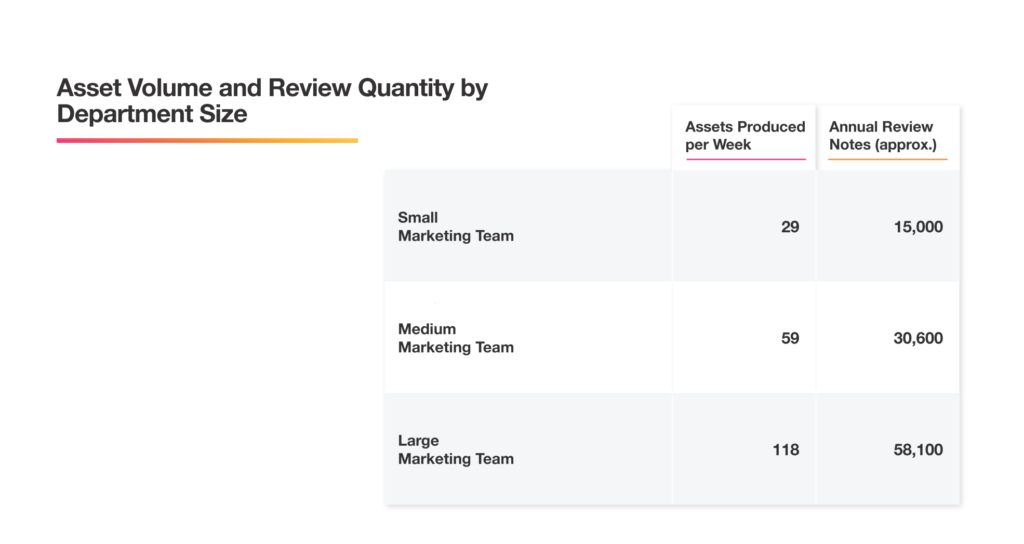
These review notes represent all the times compliance flagged content for revision, from legal compliance to brand consistency.
While looking at these numbers is a great start, the purpose of our analysis was to dig into the type of review notes to assess how much of the to-and-fro could be eliminated. In particular, how many notes were made up of repetitive corrections for standard rules that could be identified and addressed right away. How can we be certain we are helping put an end to the continual loop of corrections and help speed up the review process to help marketers launch approved work faster?
How Many Review Notes Do Compliance Teams Create by Category?
We categorized the review notes to help understand where marketing content faces the most scrutiny. Here’s an estimate of how review notes break down:

How Can Automation Reduce the Need for Repetitive Manual Reviews in Compliance Checks?
Repetitive manual marketing compliance reviews in highly regulated industries like Insurance are time-consuming and inefficient, often leading to delayed approval processes and increased operational costs. And when content is produced at scale, manual inspections become error prone, potentially allowing non-compliant content to slip through.
Automation and AI-driven solutions can significantly reduce these challenges by streamlining and speeding up the process of checking content against established guidelines. Here’s how:
AI-Powered Content Risk Detection
Risky language, such as exaggerated financial claims or incomplete disclosures can all be flagged in real-time either at brief, copy or artwork stage. Reports can even be generated to monitor compliance on live webpages and Google Ads. This technology allows marketers to take a proactive approach to standard compliance issues before submitting content for final approval. It greatly reduces the manual effort required in the review process while providing a high degree of accuracy.

Automated Disclaimer Insertion
The software includes a disclaimer engine that automatically populates briefs with the appropriate legal disclaimers based on the medium, location, and product. This ensures that all necessary legal information is included without manual intervention, streamlining the compliance workflow.

Dynamic Creative Templates
Pre-approved creative templates that lock in essential compliance requirements while allowing for customization are a tremendous help for high volume tightly regulated organizations. They allow marketers to create compliant content efficiently, minimizing the need for extensive manual reviews. They are especially useful when dealing with large remote teams and franchisees.
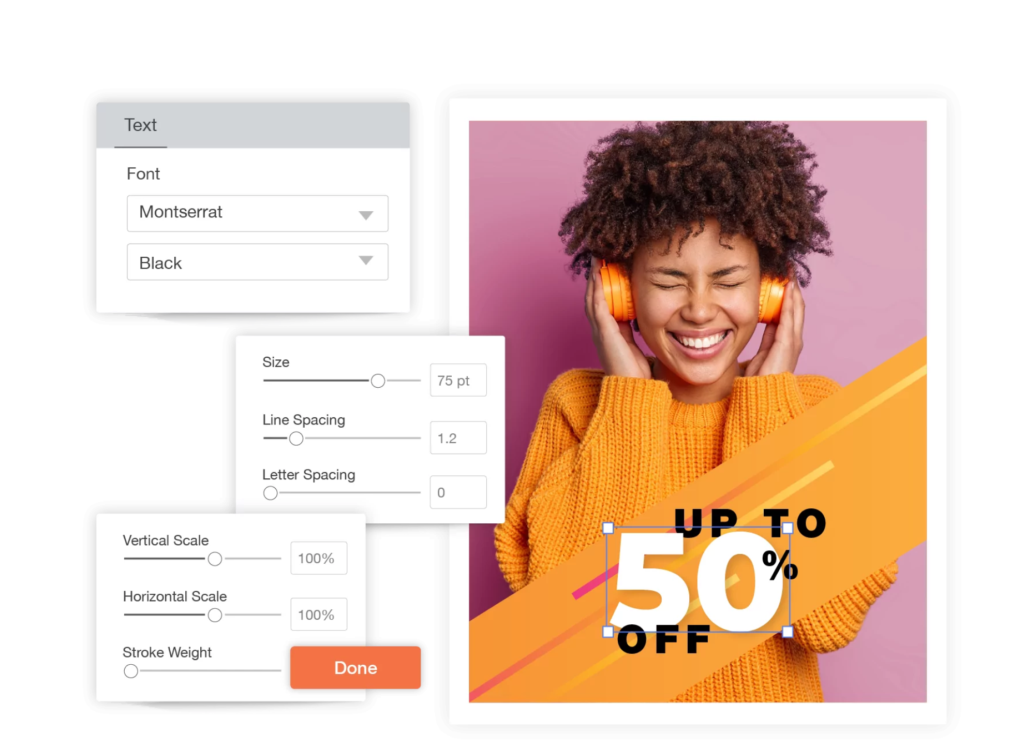
Content Approval Workflow Automation
Workflows are the vehicle that sees creative production through from brief to launch. They integrate with brand approved assets and importantly provide high visibility to all stakeholders when it comes to review comments, approval history and version control. They incorporate functions such as task management boards, proofing, markups and live content review tracking. Workflows connect to popular third party software like Adobe and Getty as well as your entire digital creative asset repository.

Automated Brand Portals
Online brand portals help stem the tide of marketing requests, automate answers to frequently asked questions and automate access to approved branding elements. Having 24/7 access to the latest downloadable brand assets minimizes the chance of internal and external content creators going off-piste. By using automated brand portals, teams can self-serve, with accurate content that automatically aligns with brand standards reducing the need for multiple rounds of review and approval.
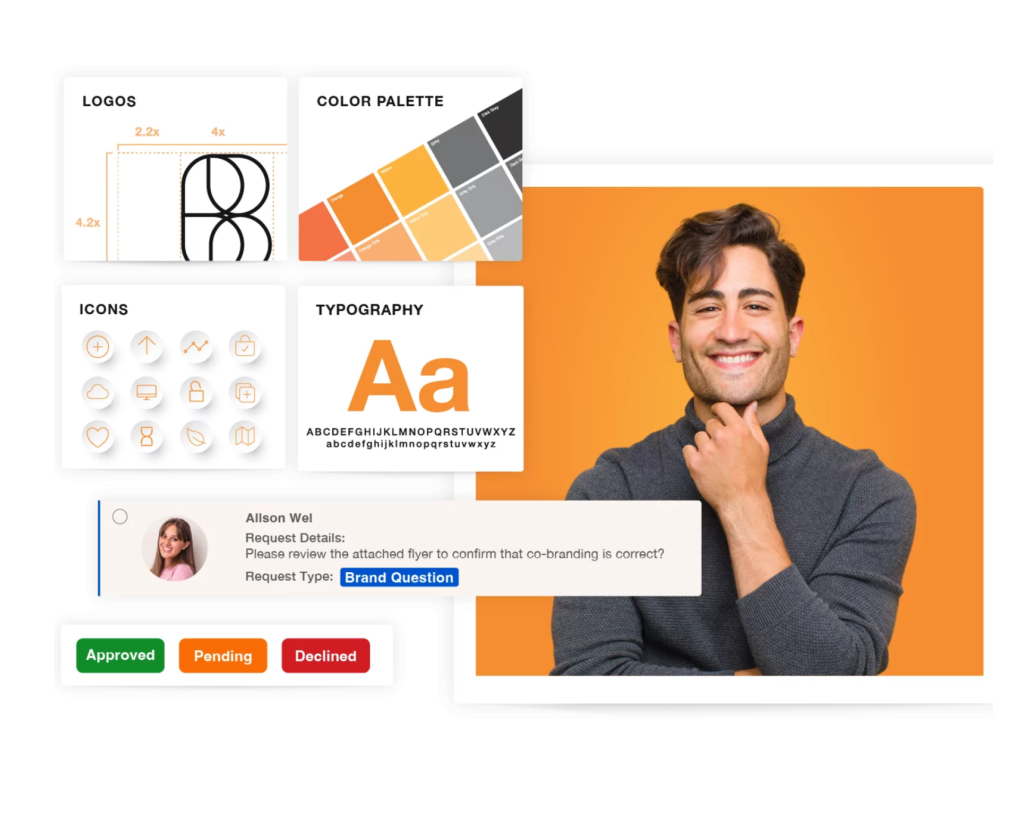
What Specific Legal and Compliance Tasks Can Be Automated to Improve Accuracy and Efficiency?
Here are the day to day functions performed by insurance compliance teams the world over that can be greatly sped up – yet at the same time – be less vulnerable to human error:
Disclosure Checks
Automated systems significantly improve the efficiency of checking required legal disclaimers and regulatory disclosures in marketing materials. For example, tools powered by AI can automatically detect whether mandatory disclaimers – such as interest rate disclosures, terms and conditions, or risk warnings – are included in financial ads, insurance offers, or promotional campaigns.
Incredibly, automation can also check the visibility and positioning of these disclosures, verifying that they are placed where consumers can easily find them, following best practices and regulatory guidelines. By automating this task, teams can save valuable time that would otherwise be spent manually reviewing each piece of content, while also ensuring that nothing is overlooked or omitted, ultimately reducing the likelihood of fines or legal challenges.
Risk Identification
Using AI-powered risk review tools identify potentially misleading statements or content that could violate compliance regulations. For instance, unsubstantiated guarantees, or misleading representations about a product’s benefits or returns. Automation tools can cross-reference content with predefined risk rules or regulations (such as truth-in-advertising standards or financial disclosure laws), instantly flagging content that might lead to consumer deception or regulatory breaches.
In addition, risk reviews can help identify non-compliant offers, such as promotions that fail to disclose critical terms or conditions, or content that violates advertising restrictions. These automated reviews drastically reduce manual effort and human error by quickly identifying risky language or elements, enabling compliance teams to focus on more complex review issues rather than sifting through large volumes of content for potential problems.
Brand Consistency
Automation plays a key role in this process by flagging out of date logos, incorrect fonts, color and messaging. It can even pick up whether logos are scaled correctly, and that the brand’s primary font is used in headings or body text etc. This ensures that all content, regardless of where it is used, maintains the brand’s integrity, protects its reputation, and adheres to legal and compliance standards. In large-scale campaigns, where multiple teams or external vendors may be involved, automation helps guarantee that the brand message is unified and legally compliant across all materials, without the need for multiple rounds of manual review.
How Can Automation Enhance Consistency in Language and Terminology Across Marketing Materials?
Consistency is crucial in the financial services industry, not just for compliance, but for brand integrity. Automation can help by:
Standardizing Terms
Automatically checking for consistent use of legal or financial terms like “annual percentage rate (APR)” or “terms and conditions.”
Enforcing Brand Guidelines
Ensuring that marketing materials comply with internal brand guidelines (e.g., tone of voice, logo placement, color schemes) to maintain consistency across campaigns.
Reducing Manual Checks
Automation reduces the need for manual proofreading, which can be time-consuming and error-prone, ensuring that all content remains consistent across channels.
What Potential Cost Savings Can Automation Bring to Compliance and Legal Review Processes?
Relying on manual processes to perform tasks that can be performed using automation and AI is a no brainer. The issue comes down to the Return On Investment (ROI) of person vs machine. The ROI is weighed up on these factors:
- Reducing Review Times / Lower Labor Costs
With automated tools, review times can be cut down from days to hours, or even minutes. The findings from our deep dive into our financial services clients’ review habits, we have been able to quantify a range of potential time savings using automation and AI can bring:
- Increased Accuracy
Removing the risk of human omission or inconsistent feedback, automation provides more consistent responses that have been ratified by senior management. - Faster Time to Market
Marketing teams can get their campaigns approved faster, leading to more timely launches and less missed opportunities.

IntelligenceBank provides a practical approach to modern marketing. Our all-in-one marketing platform has changed the way we work and has improved our marketing efficiency in implementing our overall marketing strategy while achieving consistent brand experience for our business.
Jonathan Goh | Automation and Audience Lead, Medibank

Changing the Dynamic Between Marketing and Compliance
Research showed that 80% of both Marketing and Legal/Compliance teams feel they have an “us vs. them” relationship. But when it comes down to it, their goals are more aligned that they may first think. They all want the same outcome – effective compliant creative in the market and off their desks.
If you’d like to find out more about how to automate your marketing compliance, we’d love to show you. Contact us for a live demonstration.



